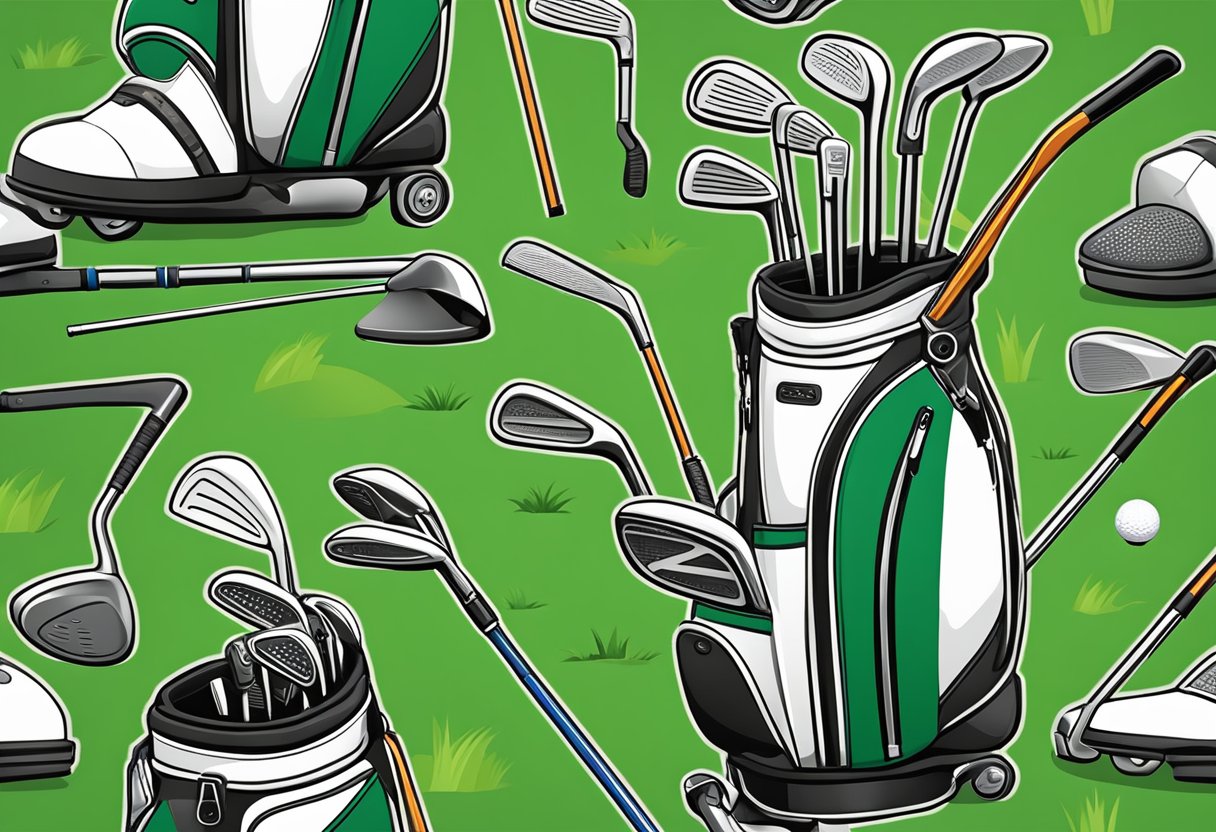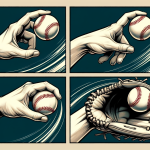Types Of Golf Clubs
Golf is a popular sport that requires skill, precision, and the right equipment. One of the most important pieces of equipment for golfers is their set of clubs. There are many different types of golf clubs, each designed for specific shots and situations on the course. Understanding the different types of golf clubs and their uses can help golfers improve their game and make more informed decisions when selecting clubs.
The family of golf clubs includes woods, irons, hybrids, wedges, and putters. Each of these club types has unique characteristics that make them suitable for different situations on the course. Woods, for example, are designed for long-distance shots, while irons are used for shorter shots and more precise ball control. Hybrids are a combination of woods and irons, offering the best of both worlds in terms of distance and control. Wedges and putters are used for shots around the green and putting respectively.
Mastering the use of different types of golf clubs is essential for golfers of all skill levels. By understanding the characteristics of each family of clubs and the situations in which they are most effective, golfers can make informed decisions about which club to use for each shot. With practice and experience, golfers can develop their skills and improve their game over time.
Key Takeaways
- Understanding the different types of golf clubs and their uses is essential for golfers of all skill levels.
- The family of golf clubs includes woods, irons, hybrids, wedges, and putters, each with unique characteristics that make them suitable for different situations on the course.
- Mastering the use of different types of golf clubs can help golfers improve their game and make more informed decisions when selecting clubs.
Understanding Golf Clubs

Golf clubs are essential tools for any golfer, and understanding their different characteristics is crucial to improving your game. There are many types of golf clubs, each designed for specific purposes, and each with unique features that determine their performance.
Clubhead Design
The clubhead is the part of the club that makes contact with the ball. It is essential to choose the right clubhead design for your game. Different clubheads have varying sizes, shapes, and weights, which directly affect the ball’s trajectory and distance.
One of the most critical factors in clubhead design is the loft angle. The loft angle determines the trajectory of the ball and is measured in degrees. The higher the loft angle, the higher the ball will go, and the shorter the distance it will travel. Conversely, a lower loft angle will result in a flatter ball trajectory and increased distance.
Shaft Characteristics
The shaft is the long, slender part of the club that connects the clubhead to the grip. The shaft’s length and flexibility are crucial factors in determining how the club performs.
Shafts come in varying lengths, and it is essential to choose the right length for your height and swing style. A longer shaft will provide more distance, while a shorter shaft will provide more control.
The shaft’s flexibility, or bend point, is another crucial factor in determining the club’s performance. A more flexible shaft will provide a higher ball trajectory and more distance, while a stiffer shaft will provide more control.
Grip Importance
The grip is the part of the club that the golfer holds onto. It is essential to choose the right grip size and material for your game. The grip’s size can affect the golfer’s ability to control the club, and a grip that is too large or small can lead to inconsistent shots.
Grips come in varying materials, including rubber, synthetic, and leather. The material you choose will depend on your personal preference and playing style.
In conclusion, understanding the different characteristics of golf clubs is crucial to improving your game. Factors such as clubhead design, shaft characteristics, and grip importance all play a significant role in determining the club’s performance. By choosing the right clubs for your game and understanding their features, you can take your golf game to the next level.
Types of Woods
When it comes to golf clubs, woods are often the first thing that comes to mind. They are designed to hit the ball a long distance and are typically used for shots from the fairway or tee. Woods are categorized into two types: drivers and fairway woods.
Drivers
Drivers are the longest clubs in a golfer’s bag and are used for hitting the ball off the tee. They are designed to hit the ball the farthest distance of any club in the bag. Drivers are typically made of metal, such as titanium, and have a large, round head that is angled to help lift the ball into the air. They have a low loft, usually between 8 and 12 degrees, which helps reduce backspin and increase distance.
Fairway Woods
Fairway woods are used for long-distance shots from the fairway or rough. They have a smaller head than drivers, but are still designed to hit the ball a long distance. Fairway woods have a higher loft than drivers, usually between 13 and 20 degrees, which helps get the ball in the air and keep it there. They are also more forgiving than drivers, making them easier to hit off the ground.
The choice of wood depends on the golfer’s needs and preferences. Golfers who want to hit the ball a long distance off the tee may prefer a driver with a low loft. Those who want more accuracy and control may prefer a fairway wood with a higher loft.
In recent years, hybrid clubs have become popular among golfers. They combine the characteristics of both woods and irons and are designed to replace long irons and fairway woods. Hybrid clubs are easier to hit than long irons and provide more distance and accuracy than fairway woods.
Overall, the type of wood a golfer chooses depends on their individual needs and performance goals. With the right wood, golfers can improve their performance on the fairway and enjoy the sport even more.
The Irons Family
Golf irons are designed to hit the ball with precision and control. Iron clubs are usually numbered from 3-iron to 9-iron, with the lower numbers being long irons and the higher numbers being short irons. Each type of iron serves a specific purpose on the golf course.
Long Irons
Long irons, such as the 3-iron and 4-iron, are designed to hit the ball long distances. They are typically used for shots from the fairway or rough and are ideal for approach shots to the green. Long irons require a high level of skill and precision, as they have a smaller sweet spot and are less forgiving than other irons.
Mid-Irons
Mid-irons, such as the 5-iron and 6-iron, are versatile clubs that can be used for a variety of shots. They are ideal for shots from the fairway and rough and can be used for approach shots to the green. Mid-irons are more forgiving than long irons and have a larger sweet spot, making them easier to hit.
Short Irons
Short irons, such as the 7-iron and 8-iron, are designed for accuracy and control. They are typically used for approach shots to the green and shots from around the green. Short irons have a larger sweet spot than long irons and are more forgiving, making them easier to hit.
Specialty Irons
Specialty irons, such as the pitching wedge and sand wedge, are designed for specific shots around the green. The pitching wedge is ideal for approach shots to the green, while the sand wedge is designed for shots from bunkers and other hazards. Specialty irons have a high level of precision and control, making them essential for any golfer’s bag.
Overall, the iron family of golf clubs is essential for any golfer who wants to hit accurate and precise shots on the course. Whether you’re hitting long shots from the fairway or short shots around the green, the right iron can make all the difference in your game.
Innovative Hybrids
Hybrids are a relatively new addition to the world of golf clubs, but they have quickly become a popular choice for many golfers. These clubs are designed to combine the best features of both irons and woods, making them versatile and easier to hit than either of those club types alone.
Hybrid Golf Clubs
Hybrid golf clubs are designed to replace the long irons in a golfer’s bag. They typically have a larger clubhead than an iron, which makes them easier to hit and provides more forgiveness on off-center shots. The clubface is also more angled than an iron, which helps the ball get up in the air more easily.
One of the benefits of hybrid golf clubs is their versatility. They can be used from a variety of lies, including rough and fairway bunkers. This makes them a great choice for golfers who struggle with obstacles on the course.
Utility Clubs
Utility clubs are another type of club that has become more popular in recent years. These clubs are similar to hybrids, but they are designed to replace the shorter irons in a golfer’s bag. They have a smaller clubhead than a hybrid, but they still offer more forgiveness than a traditional iron.
One of the key features of utility clubs is their lie angle. They typically have a flatter lie angle than a traditional iron, which can help golfers who struggle with a slice. The flatter lie angle also makes it easier to hit the ball straight.
Overall, hybrids and utility clubs are innovative additions to the world of golf clubs. They offer a combination of features from both irons and woods, making them versatile and easier to hit. If you’re looking to improve your game, consider adding one of these clubs to your bag.
Mastering the Short Game
When it comes to golf, the short game is an essential aspect of the game that can make or break a player’s score. The short game refers to any shot on the green, including putts, chips, pitches, and bunker shots. Short game requires precision, accuracy, and a lot of practice.
Wedges
Wedges are a crucial part of the short game. They are designed to help players make high, short shots that land softly on the green. There are four main types of wedges: sand wedge, lob wedge, gap wedge, and pitching wedge.
-
Sand wedge: This type of wedge is designed to help players get out of bunkers with ease. It has a wide sole and a high bounce angle, which helps the club glide through the sand.
-
Lob wedge: This type of wedge is designed to help players make high, short shots that land softly on the green. It has a high loft angle, which allows players to get the ball up quickly.
-
Gap wedge: This type of wedge is designed to fill the gap between the pitching wedge and the sand wedge. It has a loft angle that is between the two.
-
Pitching wedge: This type of wedge is the most common type of wedge and is used for shots that are too long for a sand wedge and too short for a 9-iron.
Putters
Putters are another essential club for the short game. They are used for putting on the green and are designed to help players roll the ball smoothly and accurately. There are three main types of putters: mallet putter, blade putter, and face-balanced putter.
-
Mallet putter: This type of putter has a large, round head and is designed to help players hit the ball straight. It is ideal for players who struggle with accuracy.
-
Blade putter: This type of putter has a thin, flat head and is designed to help players hit the ball with precision. It is ideal for players who have a good putting stroke.
-
Face-balanced putter: This type of putter is designed to help players keep the face of the club square to the ball throughout the stroke. It is ideal for players who struggle with consistency.
In conclusion, mastering the short game is essential for any golfer who wants to improve their score. By practicing with wedges and putters, players can learn to control shot distance, read the green, and make accurate shots.






